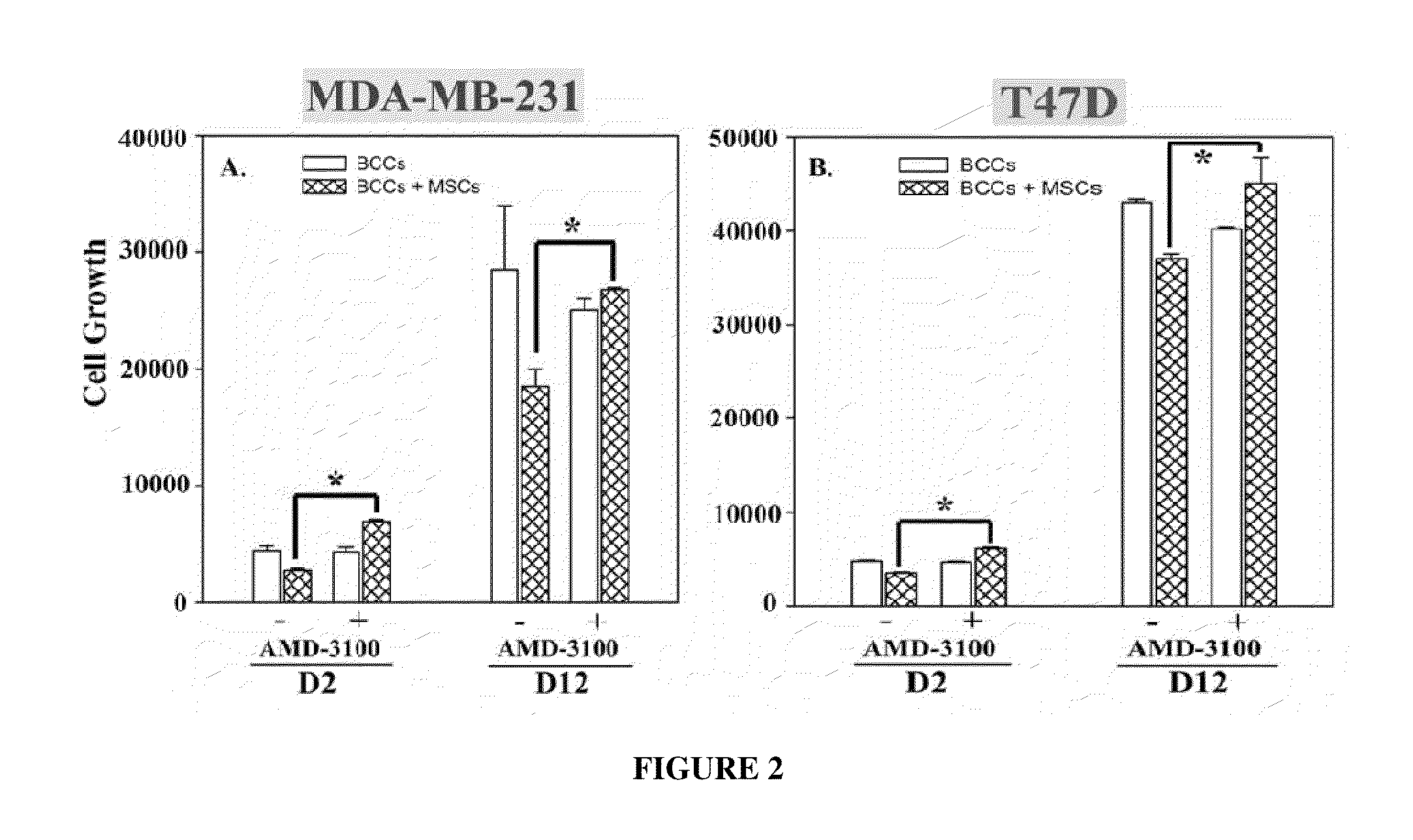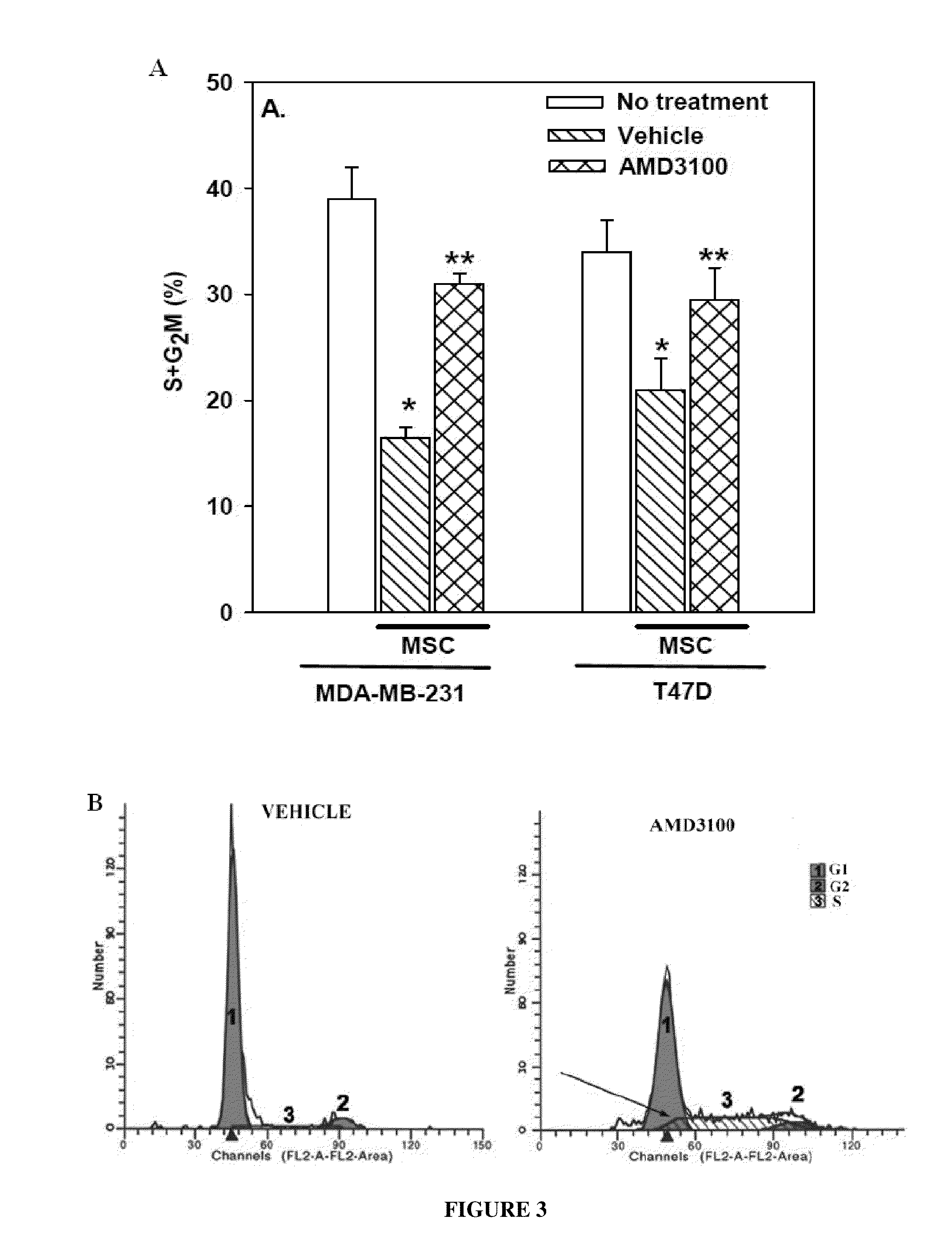Combination Therapy for Breast Cancer Treatment
a breast cancer and combination therapy technology, applied in the field of breast cancer treatment, can solve the problems of toxic direct targeting of gjic between breast cancer cells and stroma
- Summary
- Abstract
- Description
- Claims
- Application Information
AI Technical Summary
Problems solved by technology
Method used
Image
Examples
Embodiment Construction
[0018]MSCs can pose a significant clinical dilemma for breast cancer treatment, due to MSCs acting as suppressor of breast cancer cells proliferation. In the absence of proliferation, the breast cancer cells will show a seemingly dormant phenotype and could be refractory to most anti-cancer agents. New therapies are required to reverse the dormant breast cancer cells into proliferation cells for targeting. In the studies which yielded the present invention, we showed CXCL12 and its receptor, CXCR4, as mediators in the interactions between MSCs and breast cancer cells, leading to growth arrest (FIG. 7C, part 1). Pharmacological disruption with AMD3100, (FIG. 7C, part 2) stimulated breast cancer cells proliferation through MSC-derived IL-1α and IL-1β. This renders the actively cycling breast cancer cells to be susceptible to carboplatin.
[0019]MDA-MB-231 seems to be more responsive to AMD3100 than T47D (FIG. 1). This might be due to single interaction between CXCL12 and CXCR4 between M...
PUM
| Property | Measurement | Unit |
|---|---|---|
| concentrations | aaaaa | aaaaa |
| concentrations | aaaaa | aaaaa |
| time | aaaaa | aaaaa |
Abstract
Description
Claims
Application Information
 Login to View More
Login to View More - R&D
- Intellectual Property
- Life Sciences
- Materials
- Tech Scout
- Unparalleled Data Quality
- Higher Quality Content
- 60% Fewer Hallucinations
Browse by: Latest US Patents, China's latest patents, Technical Efficacy Thesaurus, Application Domain, Technology Topic, Popular Technical Reports.
© 2025 PatSnap. All rights reserved.Legal|Privacy policy|Modern Slavery Act Transparency Statement|Sitemap|About US| Contact US: help@patsnap.com



